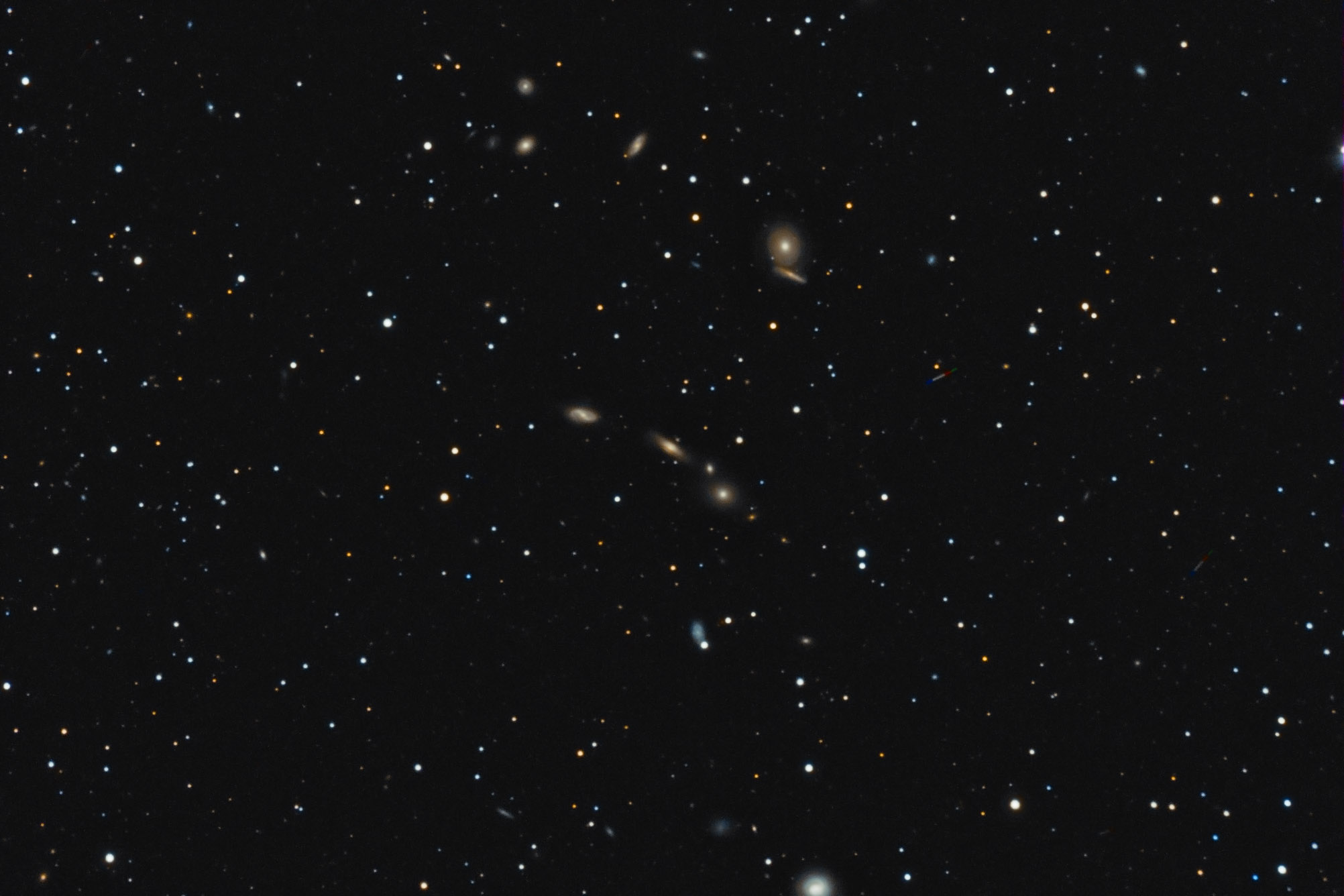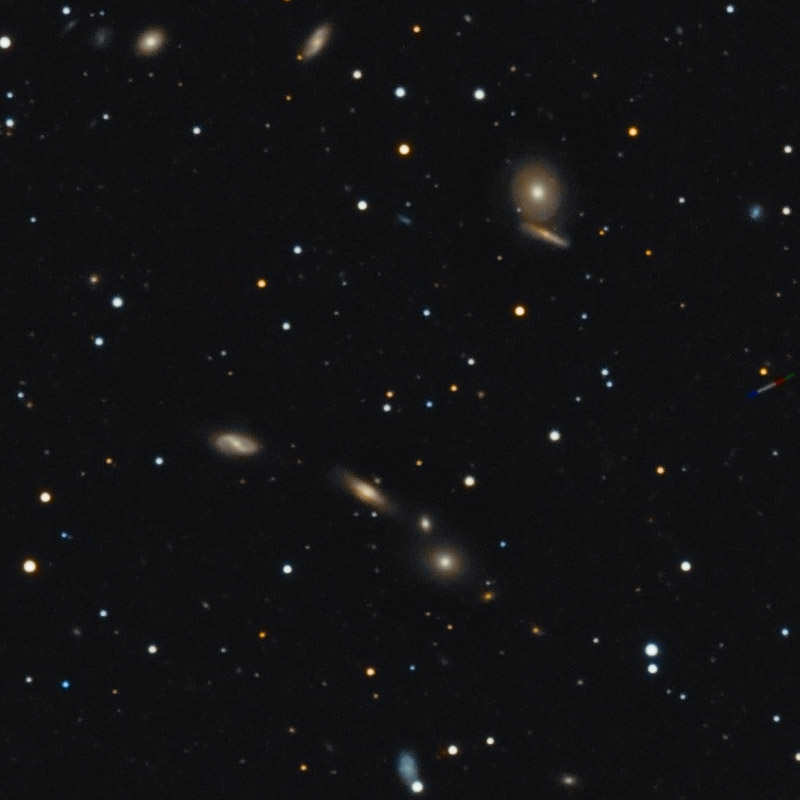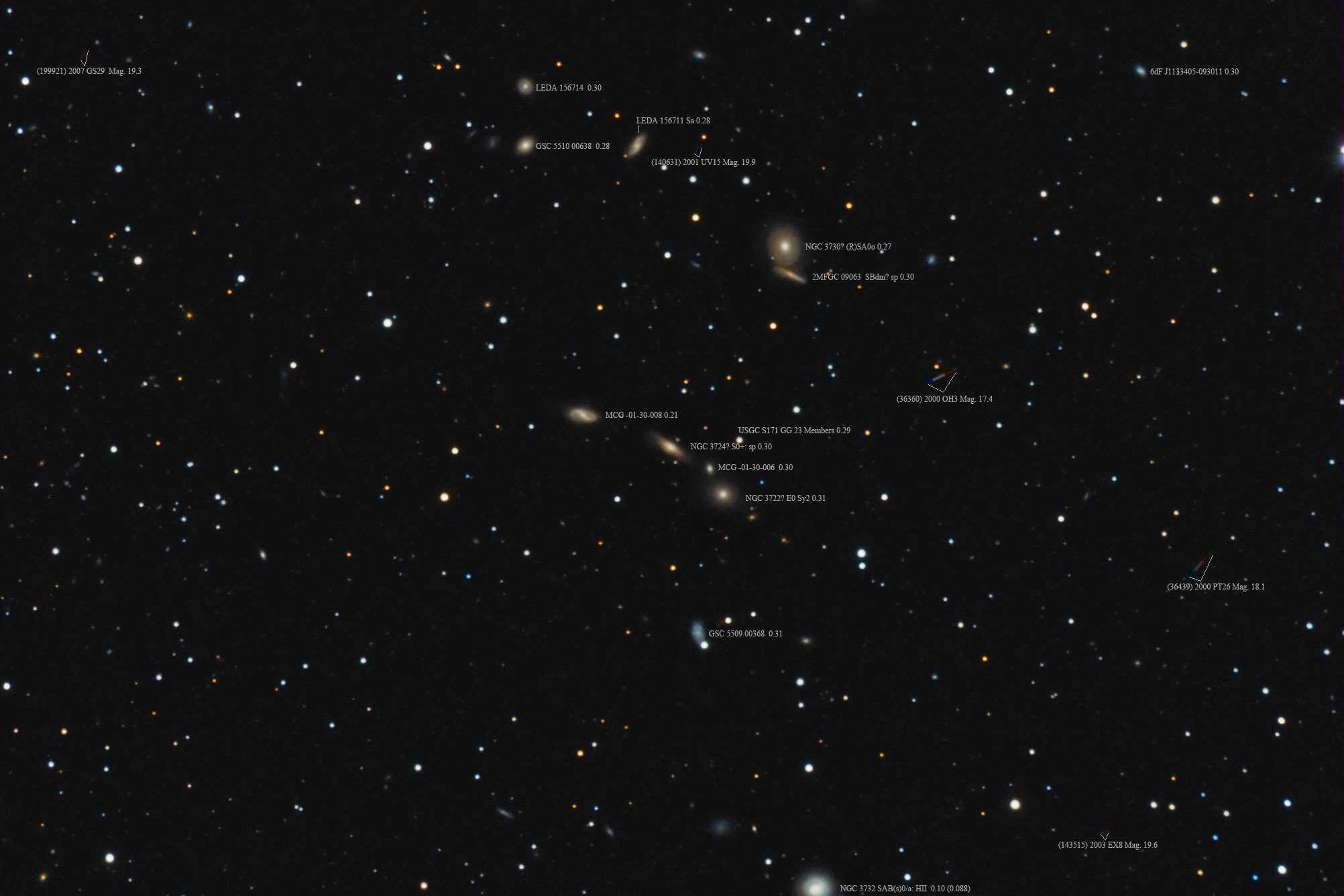| Description | Images |
Object name: NGC3724Designation(s): NGC3724, NGC3722, NGC3730, NGC3732, When I imaged the USGC S171 galaxy group last April I had no idea what a can of worms I was opening. I looked up the group on a POSS server nothing odd was seen. When I brought it up in The Sky I decided to center on NGC 3724 so entered those coordinates. The scope dutifully imaged exactly what I expected. I processed the image and seeing it was in a little studied area had only a few galaxies to annotate. When I started in on that all hell broke loose. When I checked the NGC project for details on NGC 3724 it showed me an entirely different galaxy yet referred to NGC 3732 at the very bottom of my image. But nothing else made any sense at all. At least they gave an IC number for it as well (IC 2910). That took me to a galaxy almost 40 minutes beyond this field to the west. Now I was totally confused. Looking up NGC 3724 at NED showed the field and galaxy I'd taken but noted that NGC 3724's identity was uncertain. Oddly NED had no such "essential note" for NGC 3722 even though the NGC project again pointed to an entirely different galaxy two thirds of a degree west well out of my field of view. Then checking NGC 3730 I found it too was of uncertain identity yet both sources pointed to the same galaxy in this case. By this time I was breaking out the Jack Daniels and it was only mid-afternoon. For a lot more on this confusion see the entry for NGC 3724 at the NGC Project and their reasoning as to why they picked these other galaxies. Since I use NED as my standard source unless I have a strong reason otherwise I'll go with their identifications on the annotated image. But then I checked SIMBAD and found yet a different ID for these. What NED has for 3724 SIMBAD says is 3722 and vise versa. NGC 3730 at NED and NGC Project is NGC 3721 at SIMBAD. NED says 3721 is a galaxy just out of the top of my field while the NGC project puts it over near their version of NGC 3722 and 3724. Even a half dozen shots of Jack Daniels didn't help my aching brain. In any case, there's no uncertainty that this is the field for the center of USCG S171 whose center is marked on the annotated image. Related Designation(s):2MASS J11341395-0950443, 2MASS J11341412-0950448, 2MASS J11341685-0934336, 2MASS J11342330-0940478, 2MASS J11342855-0939381, 2MASS J11342868-0939368, 2MASX J11341393-0950444, 2MASX J11341683-0934335, 2MASX J11342332-0940475, 2MASX J11342867-0939365, 6dF J1134138-095044, 6dF J1134139-095044, AKARI J1134139-095049, AKARI J1134287-093936, GSC 5509 00335, GSC 5509 00401, GSC 5509 01292, GSC 5510 01269, HDCE 0653 NED007, HIPASS J1134-09, IRAS 11316-0934, IRAS 11319-0922, IRAS F11316-0934, IRAS F11319-0922, ISOSS J11344-0939, KUG 1131-095, LDCE 0810 NED004, LDCE 0824 NED008, LDCE 0824 NED009, LGG 248:[G93] 005, MCG -01-30-003, MCG -01-30-005, MCG -01-30-007, MCG -02-30-005, NGC 3722, NGC 3724, NGC 3730, NGC 3732, NGC3722, NGC3724, NGC3730, NGC3732, NPM1G -09.0436, NPM1G -09.0437, NVSS J113413-095047, NVSS J113428-093935, PGC 035734, PGC 035743, PGC 035746, PGC 035757, USGC S171 NED10, USGC S171 NED11, USGC S171 NED12, [DZ2015] 449-01, [DZ2015] 449-03, [SLK2004] 0622, [VCV2006] J113423.3-094006, [VCV2006] J113423.3-094048, | Permanent link: https://images.mantrapskies.com/catalog/NGC/NGC3724-NGC3722-NGC3730-NGC3732/NGC3724L4X10RGB2X10.JPG |


